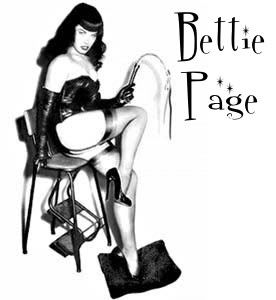
(Keywords: politics, feminism, photography, fetish, movies, modelling's more work than you think it is)
People are always surprised when I list off my favorite photographers. Among such names as Adams, Steiglitz, and Kasebier, I always make a point to mention Bunny Yaeger. And I've got good reason to.
Yaeger was both a photographer and a swimsuit model, most often working as both for herself. She was an artist with a gimmick - she made it clear she was doing it all herself. She'd most often put a prop camera and tripod in the frame and act as if she were posing for the prop - this is, in my opinion, a brilliant solution to the problem of making your exhibitionism clear in print.
The problems with self portraiture are staggering. You really have to know your frame so well that you know where you are within it. And Yaeger worked in a time when the only thing automatic about the camera was the timer. Aperture values, shutter speed, and focus would all have to be calculated and set by hand. Clearly, this was a woman with an impressive skill set.
And when she worked with model Bettie Page, she became half of what just may be the best model/photographer team in the history of glamor photography.
What's all this have to do with politics? One, a biopic about Page, The Notorious Bettie Page, came out saturday and, two, as a 1950s era pinup and fetish model, Page has become a very unlikely feminist icon.
I praised Bunny, so allow me to praise Bettie before I explain that. As a photographer, I know something about models. Most people think all they do is stand there and be pretty. But every once in a while, you work with a model who gets it. They know exactly how they look through the lens and pose as easily as if they were in front of a mirror. They know that they don't look at the photographer's eyes, but two inches lower, straight into the lens. It may seem odd, but a talented photographic model is possible. And, by all accounts, that's Bettie Page. Glam models of the time did everything themselves, most of the time - hair, makeup, sometimes even wardrobe. In Yaeger's famous Jungle Girl photos, Page made the leopard print loincloth/bikini herself. Page's self-presentation was always superb. As a photographer, I am a huge fan. Bettie was a professional without equal in her time.
Now, why is Page a feminist icon? Because of what she portrayed. An earlier generation of feminists would say that Page was exploited for her beauty, but the current generation recognizes that portrayals of female sexuality aren't a bad thing. Nudes in art have always really been about sex. It's kind of hard to argue that Bettie and Bunny's sunbather pics were exploiting women, while Botticelli's Birth of Venus is not. In fact, Page and Yaeger were an all female team - if anything, you could argue that they were two women using their considerable beauty, brains, and skill to exploit men.
And then there's Irving Klaw. A fetish photographer with more vision than skill, Klaw defines what we think of when we think of fetish photography. Corsets, black stiletto heels, stockings, opera gloves - all began with Klaw. And Bettie Page was his greatest model.
Like Rita Hayworth and Barbara Stanwyck a generation before her, Page was well cast as both the sunny sweetheart and the dangerous femme fatale. A gorgeous black haired woman with an hourglass figure, a million watt smile, and legs that wouldn't quit, she was almost literally the face of sexual desire. Klaw took that and turned it into the iconic 'kitten with a whip' - the Dominatrix who's gender is her strength and who's sexuality is her power plant.
Her own life was nothing like that. Page's prolific work as a model was a campaign of self promotion. Like Charro a generation later, Bettie Page wanted to be famous for being famous (for those who've always wondered, Charro is a classically trained flamenco guitarist and singer - a talented one, at that). This fame, in turn, would be parlayed into a career as a movie star. Sadly, that didn't pan out. She was bipolar, a condition that, at the time, was untreatable. It says a lot about her that she got as far as she did. And she did become a pop culture icon.
She's literally the female protagonist in the comic book Rocketeer - the character is named Bettie and is drawn to look exactly like her. And there's a reason that Lucy Lawless wore black hair and bangs in Xena: Warrior Princess. Xena is Bettie. The kitten with a whip became the warrior with a sword - strong, tall, beautiful, and feminine.
These days, by all accounts, Page is a sweet old woman living in California. I haven't checked, but I hope she's getting something out of this movie. I've always been a fan and it's nice to see that she's finally - by proxy through Gretchen Mol - made it as a movie star. I hope she sees this as her dream realized.
Go visit Page's site and see what a strong beauty looks like. There aren't many in Page's industry who have something to be proud of - Bettie's the exception.
--Wisco




